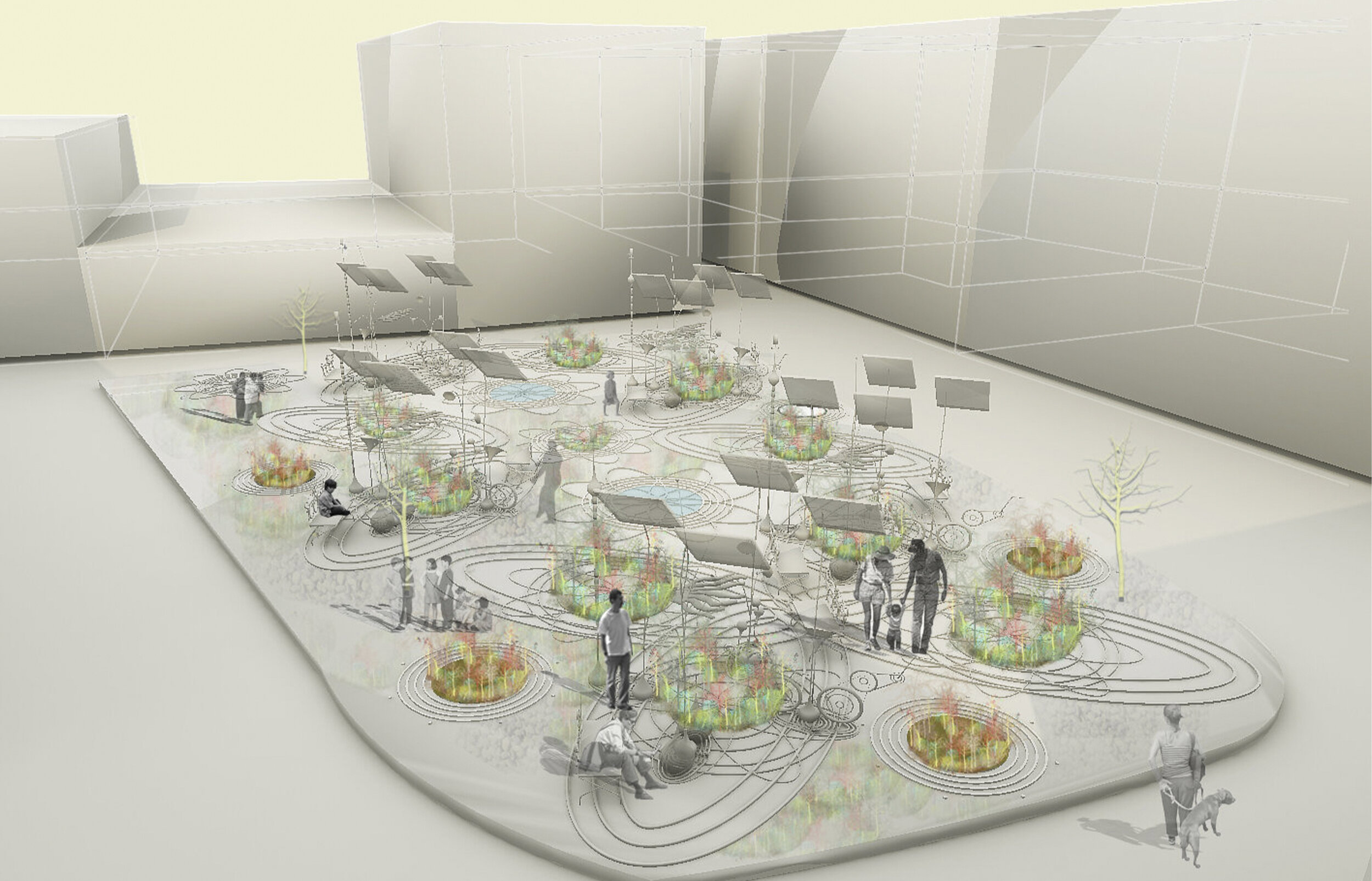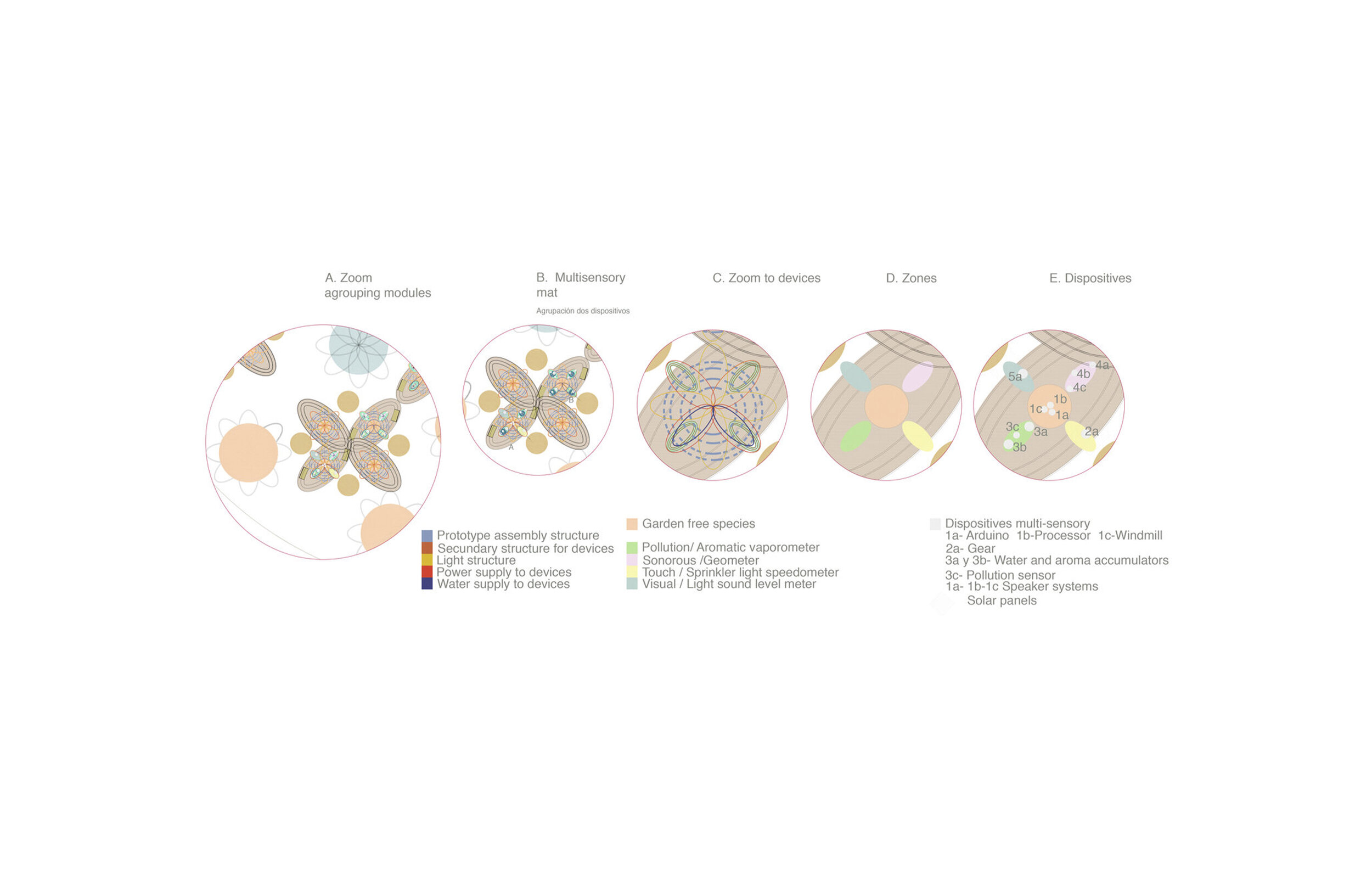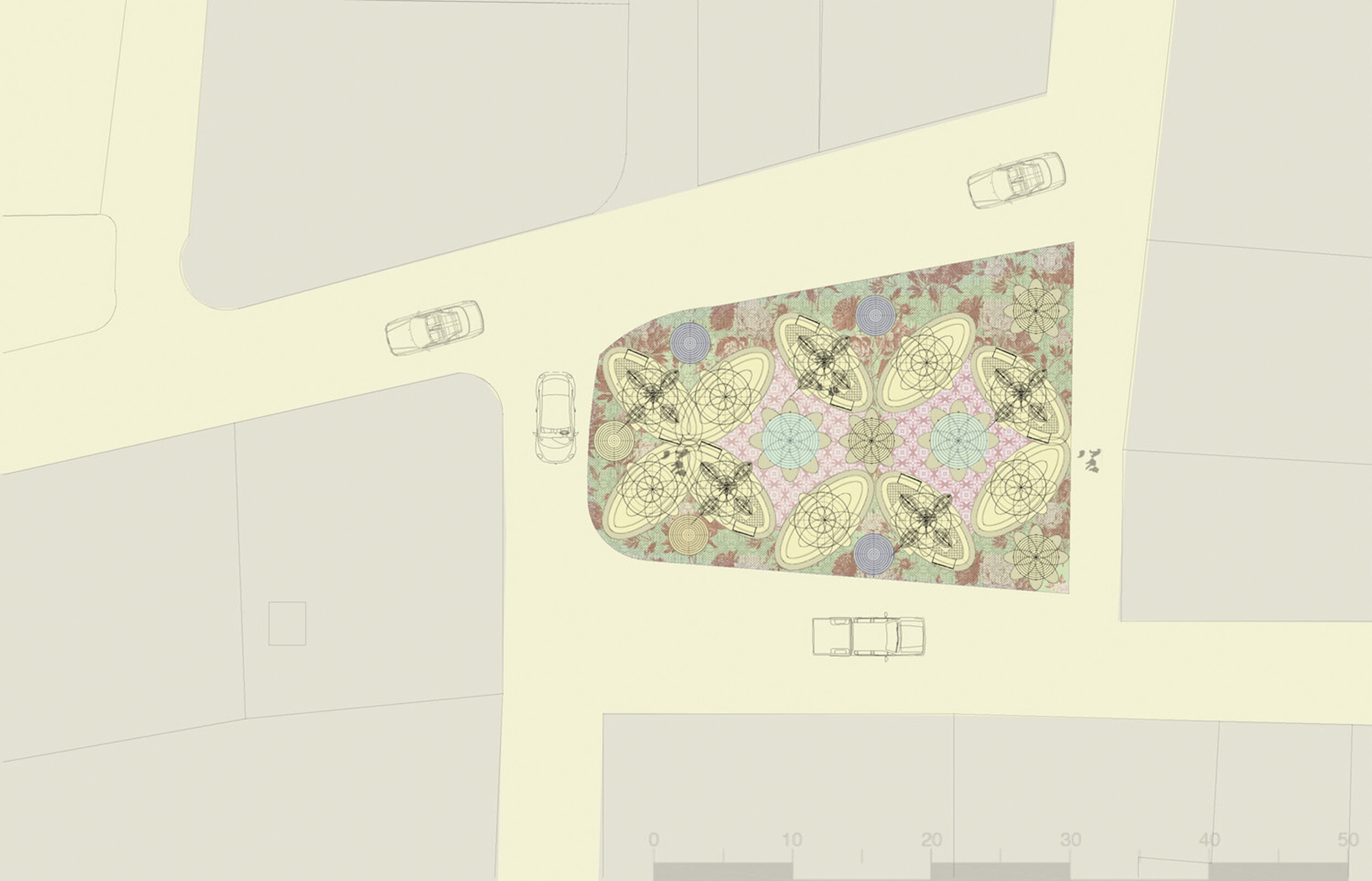ˇ
Concurso De Jardinería Sostenible En Canarias Y Tenerife, Tapete Plurisensorial.
Multisensory Carpet.
* Localización (Location) - Santa Cruz de Tenerife and La Palma de Gran Canarias (Spain).
/ Fecha (Date) - 2008.
/ Arquitectos (Architects) - Catalina Patiño CÂPÂ and Eliana Beltrán.
/ Colaboradores (Collaborators) - Clara Restrepo (architect), Federico López and Daniel Gómez (musicians and sound engineers), Julián Giraldo (electronic engineer) and Juan Esteban Giraldo (art and statistics student
/ Cliente (Client) - Art and Landscape Biennale of Canaries, Tenerife, and ASA (Architecture Sustainability Association)
MULTISENSORY MATTRESS
The dialogue construction:
Question: Please tell us, how did you apply the sustainable gardening notion to this proposal?
Expert: Our working team understands that a sustainable gardening to organize the natural surroundings and the use of technological devices as well as the cooperation of citizens to ensure its functionality and sustainability. We understand the notion of a natural environment understands the living beings as well as environmental and technological agents.
Question: What are the elements or parts that compose the Multisensory Carpet?
Expert: One: The tracing of the layout and the planting of endemic species to reveal the classical beauty of the composition and geometrical organization of the garden. The resulting forms utilize networks of both hydraulic and energy conduction.
Two: From this geometric development appears the carpet or the platform garden for assembling the prototype garden that is made up of different devices to measure different agents: soil constitution, fertility, humidity, and the amount of oxygen and contamination in the air as well as noise pollution. The gardeners that adopt this space will witness how the contemplation garden turns into an interactive multisensory exploration.
Three: Without a gardener, a housewife, children or your personal care there can be no garden; no one to assemble the devises or perceive what happens inside them. The gardens offer scientific data and provide civil participation dynamics to optimize resources and maintain the right bioclimatic functioning. Through swift actions users can modify indicators to know what the right levels of each factor are for the plants survival and preservation.
It should be noted that the assembly and control of this garden is meant to be within anybody capabilities particularly for children above eight years old, under adult supervision. And they must know that it can be installed in any district due to its modularity and structural flexibility.





